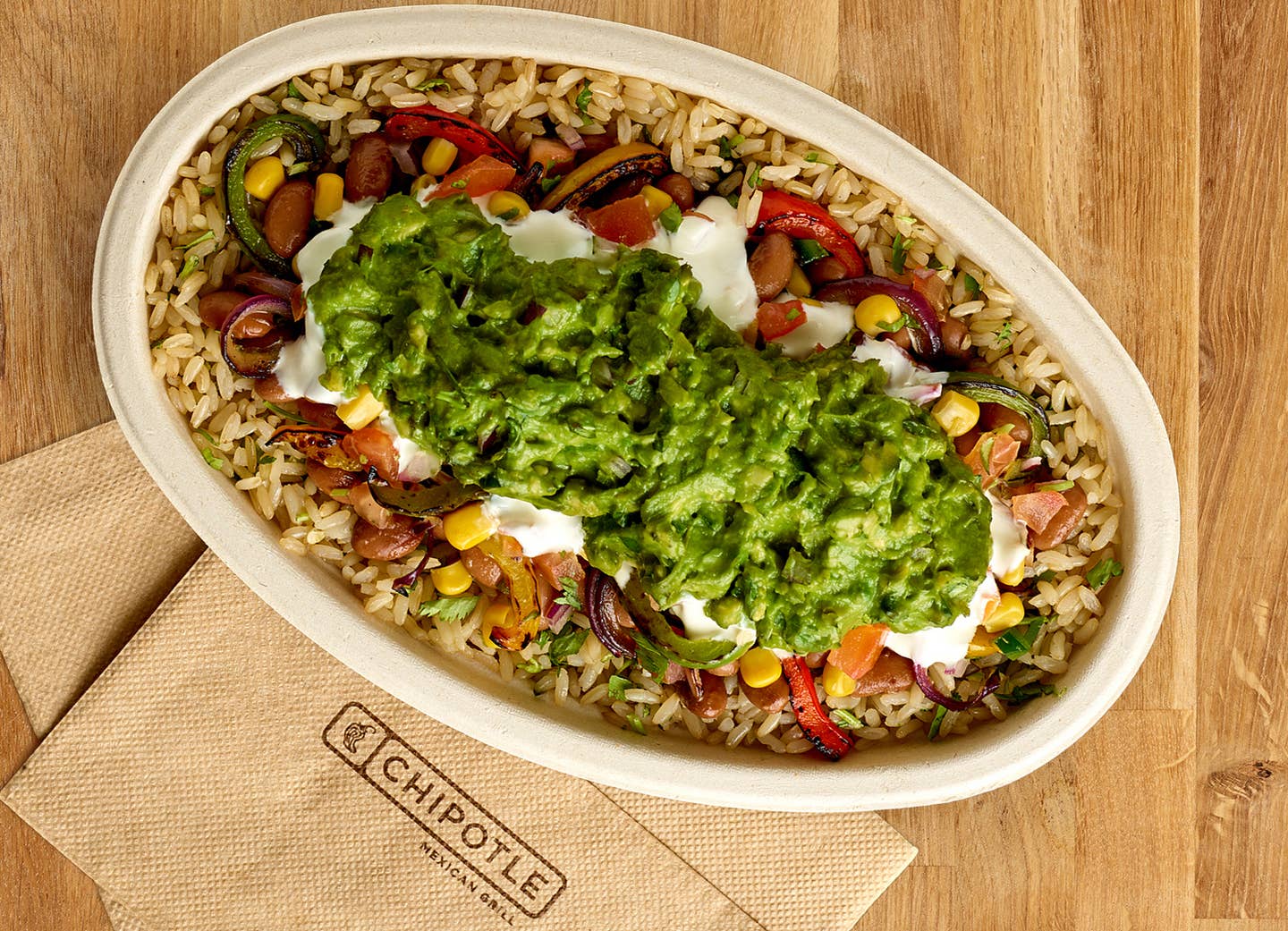
You’re More Likely to Buy Lab Grown Meat if It’s Called This
Americans could be eating cultivated meat (also known as cell-based, lab-grown, or cultured meat) far sooner than previously expected, as food tech companies receive the "green light" from the Food and Drug Administration. Currently, about 80 percent of consumers are open to trying cultivated meat products, but this week, new research reveals that specific terminology could be the key to attracting customers to this more sustainable meat.
Chris Byrant of the Univesity of Bath and Marlana Malerich of the University of Edinburgh released a study concerning U.S. consumers' attitudes toward cultivated meat product labels. Most commonly, this innovative animal-free meat uses "cultivated" as established by the Good Food Institute and Bruce Friedrich. However, the study found that the most popular terms were "cell-cultured" and "cell-cultivated" meat. In contrast, terms such as "artificial" and "lab-grown" revealed low interest.
“We surveyed U.S. consumers to compare nine different labels for cultivated meat and seafood products in terms of appeal, purchase intent, perceived safety, perceived allergenicity, and clarity,” Bryant told Vegconomist. “We tested terms that were suggested by stakeholders in recent USDA and FDA calls for comments, as well as some additional terms.
“Some had proposed that these products be labeled ‘artificial’ meat or seafood, but we found that this terminology was not a good representation of the nature of the products, and led to many people mistakenly thinking they would be safe for allergy sufferers. On the other hand, we also tested a completely new term, ‘Novari’, but we found that this had very low levels of consumer understanding.”
The researchers concluded that cultivated meat brands should highlight the origin of the meat, including ingredient and allergen lists when appropriate. Most importantly, consumers linked "lab-grown" to negative associations, making them less likely to purchase and try sustainable meat. To the authors' knowledge, this is the first study to examine consumer response to cultivated meat labels.
“Overall, the terms ‘cultured’ and ‘cultivated’ performed well in terms of understandability, consumer appeal, and communication of safety and allergy status," Bryant said. "Adding the prefix ‘cell-‘ to these terms further increased understanding and clarity. Notably, none of the terms we tested were as well-understood as a short descriptive phrase (‘Grown from animal cells, not farmed or fished’). This suggests that including a short description could be optimal in terms of consumer understanding, and there could also be even better terms we have not yet tested."
Regulatory Approval for Cultivated Meat
This November, Upside Foods became the first company within the United States to receive the "No Questions" letter from the FDA, signaling a "green light" for the cultivated chicken industry. The letter allows Upside Foods to prepare for commercials sale, awaiting the full regulatory approval needed from the United States Department of Agriculture. Currently, Upside Food's EPIC facility is expected to produce 50,00 pounds of cultivated meat per year after opening, but is eventually, slated to reach a maximum capacity of 400,000 pounds per year.
Upside Foods is also working closely with acclaimed chef Dominque Crenn, who joined the company as a culinary advisor. Pending regulatory approval, Crenn will add the cultivated chicken to her Michelin-starred restaurant Atelier Crenn, marking the first time her menu has featured meat since 2018.
Plant-Based vs. Vegan
Terminology makes difference to shoppers, not only for cultivated meat but plant-based foods as well. About 88 percent of consumer care about the "authenticity" of their food, so when shoppers browse grocery stores, labels are essential. This December, ProvVeg International conducted two studies to determine the best labels for plant-based foods, finding that an overwhelming amount of consumers preferred "100 percent plant-based" over "vegan" or "vegetarian."
For more plant-based happenings, check out The Beet's News articles.
Top 10 Sources of Plant-Based Protein According to a Nutritionist
1. Seitan
Protein: 21 grams in ⅓ cup (1 ounce) Seitan isn’t as popular as other proteins, but it should be! Made from wheat gluten, its texture resembles ground meat. It’s often used in pre-made veggie burgers or meatless nuggets. Seitan has a savory taste, like mushrooms or chicken, so it works well in dishes that call for an umami flavor. With a hearty texture, seitan can be the star of practically any vegan main dish. Add it to stir-fries, sandwiches, burritos, burgers, or stews. Like tofu, seitan will take on the flavor of any marinade or sauce.
2. Tempeh
Protein: 16 grams in 3 ounces If you like a protein with a bit of bite, add tempeh to your list. Made from fermented soybeans, tempeh has a slightly nutty flavor and is pressed into a block. Most varieties include some sort of grains, such as barley or millet. Not only is tempeh a plant-based source of protein, but the fermentation process also creates good-for-your-gut probiotics. You can cut tempeh right off the block and use it as the base for a sandwich or pan-fry it with some sauce. Or, crumble, heat, and make it the star of your next taco night.
3. Lentils
Protein: 13 grams in ½ cup cooked Lentils come in multiple varieties--red, yellow, green, brown, black. Regardless of the type lentils are small but mighty nutritional powerhouses. They pack a good amount of protein as well as iron, folate, and fiber. When cooked, brown lentils retain their texture and can be the base for a grain bowl or make a hearty substitute for ground meat in meatballs, lasagna, tacos or Bolognese. Red lentils are a bit softer and make a nice add-in for a hearty soup, chili, or stew.
4. Hemp Seeds
Protein: 10 grams in 3 tablespoons Hemp seeds are a tender and nutty seed, derived from the hemp plant. They contain good amounts of omega-3s, iron, folate, magnesium, phosphorus, and manganese. They are also a solid source of both soluble and insoluble fiber, which helps to keep your digestive tract healthy and humming. Because they pack a double whammy of protein and healthy fats, hemp seeds can help satisfy hunger, preventing those embarrassing stomach growls as you slog your way to your lunch break. Add them to your morning smoothie or sprinkle them on top of yogurt, oatmeal, or even a salad.
5. Tofu
Protein: 9 grams in 3 ounces (⅕ of a block) Made from coagulated soybeans, tofu is the most popular plant-based protein. Soy is one of the only meatless "complete" proteins, meaning that it contains all of the essential amino acids that the body can’t make but needs for muscle and immune function. With 15% of your daily calcium needs, tofu is also a good replacement for dairy.
6. Edamame
Protein: 9 grams of protein in ½ cup This sushi appetizer is a nutrient powerhouse, so eat it anytime. Edamame is really just another name for soybeans in their pods. Let’s list off some stats--a small ½-cup serving of edamame has 9 grams of protein, 15% of your daily vitamin C, 10% of your daily iron and 16% of your daily fiber. Keep a bag of edamame in your freezer to serve as a fun-to-eat side dish or opt for the shelled variety to toss into salads or a grain bowl.
7. Quinoa
Protein: 8 grams per cup (cooked) Quinoa is an ancient grain and since it's gluten-free a great choice for anyone avoiding gluten. Add it to your burger recipe to create filling texture, or instead of meat in your taco or burrito. Quinoa is among the healthiest foods on the planet, delivering phytonutrients that have anti-inflammatory qualities, so keep it in your pantry for any meal that needs a filling grain. Just remember to soak it and rinse before cooking to get rid of any bitter taste.
8. Black Beans
Protein: 7 grams in ½ cup (canned) Eating beans on the regular might as well be a prerequisite for a plant-based diet. Not only are canned black beans inexpensive, but they also contribute 10% of your daily iron and 25% of your daily fiber to your diet. For less than $1 a can, beans can be the star of tacos, quesadillas, salads, soups, burgers, or dips.
9. Amaranth
Protein: 6 grams in ⅔ cup (cooked) Chances are you’ve never cooked amaranth. But you should, since this tiny, gluten- free grain is packed with almost 30% of your daily fiber and 20% of your daily iron. Cook it like a traditional grain to yield a soft, porridge-like texture. Many people add amaranth to other a hot breakfast cereal mixture, like oats and quinoa. It also pops like popcorn. Toss it in a pot with some oil and wait for it to pop up into a nutritious snack.
10. Peas
Protein: 5 grams in ⅔ cup If peas were one of your most hated veggies as a kid, it’s time to give them another chance. These green beans are a great low-calorie protein to keep in your freezer. Sure, they don’t always taste great when steamed or microwaved (who wants to eat mushy, overcooked peas?), but they do blend well into a yummy puree that can be slathered on toast. To amp up the flavor, add some lemon juice or mint to your mix before you blend.
More From The Beet






